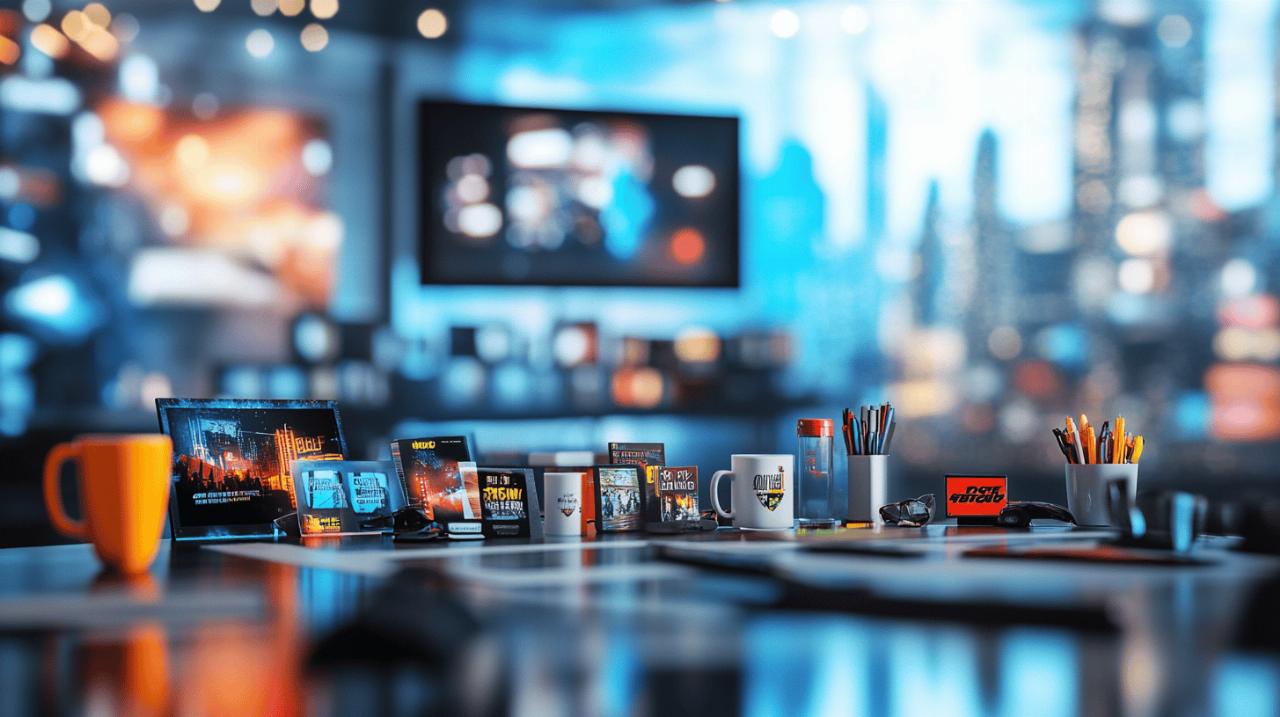Battling Bootleg TV Merchandise: Coulisses Insoupconnees: Le Business Secret des Produits Derives dans les Series TV Explained
The world behind your favourite telly programmes extends far beyond what you see on screen. When the credits roll, a massive industry kicks into gear, turning beloved shows into merchandise empires that generate substantial income. This hidden business of TV show memorabilia represents a financial goldmine for production companies, with strategies becoming increasingly sophisticated in the digital age. Let's explore this fascinating world where entertainment meets retail.
The vast world of tv show memorabilia
Television merchandise has evolved dramatically over the years, transforming from simple promotional items into elaborate product ecosystems designed to extend the viewing experience. TV series have become commercial empires, with merchandise forming a key financial strategy that keeps fans engaged long after broadcast. The emotional connection viewers develop with characters and storylines creates the perfect opportunity for studios to analyse audience habits and develop product lines tailored to meet expectations.
From keyrings to costly collectibles
The range of available TV merchandise spans from affordable trinkets to luxury collectibles commanding impressive sums. A casual fan might pick up a themed keyring or mug as a small reminder of their favourite programme, while dedicated collectors might invest in limited-edition figurines or authentic props from the set. Take 'Peaky Blinders' for example—the show partnered with a French winemaker to create a limited-edition Saint-Émilion, alongside video games and collector's clothing. The BBC carefully crafted these premium items to appeal to serious enthusiasts willing to pay top dollar for exclusive pieces.
How fans fuel the merchandise market
The emotional investment fans make in their favourite programmes drives the merchandise market to extraordinary heights. Marketing teams leverage this connection, designing products that allow viewers to bring a piece of their beloved fictional worlds into reality. This emotional marketing proves incredibly effective, with fans happily spending their hard-earned cash on items that strengthen their bond with a show. Studios meticulously analyse audience preferences to identify potentially successful collaborations and product lines. The phenomenon extends beyond traditional retail too—streaming platforms now organise flash sales and special online events to maximise the impact of their merchandise offerings.
Quality Concerns in the TV Merchandise Industry
With such vast amounts of merchandise flooding the market, quality can vary dramatically between products. Production companies must balance profit margins against maintaining brand integrity through well-made items. This tension creates a marketplace where discerning fans need to carefully evaluate what they're purchasing.
Spotting bargains versus rip-offs
For consumers navigating the TV merchandise landscape, distinguishing between value and exploitation requires some savvy. Official products typically offer better quality but come with premium price tags reflecting licensing costs. Shows like 'Peaky Blinders' maintain dedicated online shops selling everything from mugs to tees, ensuring authenticity but often at higher prices. The exclusivity of products plays a key role in their perceived value—limited edition items like the Peaky Blinders wine command higher prices precisely because of their scarcity. Ultimately, the long-term success of merchandise lines depends on maintaining quality and consistency that justifies the cost to fans.
The manufacturing secrets behind official products
Behind every official piece of merchandise lies a complex web of licensing agreements and quality control measures. Production companies are exceptionally careful about their manufacturing partnerships to preserve brand reputation. These behind-the-scenes arrangements ensure that merchandise meets specific standards before reaching consumers. The relationship between studios and manufacturers requires careful management to maintain consistent quality across product lines, especially when dealing with global distribution. This attention to detail explains why official merchandise typically costs more than unofficial alternatives—the additional oversight and quality assurance add to production expenses.
The financial goldmine for television companies
Television production represents a massive investment—French series typically cost between €2 to €5 million per episode, while American productions like 'Band of Brothers' reached an astounding $20 million per episode. With such substantial costs, studios must develop multiple revenue streams to achieve profitability.
Revenue streams beyond broadcast
The traditional model of television revenue relied heavily on viewership and advertising—shows like NCIS drawing 16.6 million viewers or Modern Family commanding $330,908 for just 30 seconds of advertising. However, the rise of streaming has transformed how shows generate income. Merchandise represents a substantial source of revenue that contributes directly to financing future seasons. The most successful shows create universes that extend naturally to other commercial media, allowing for continual monetisation through various channels. High-tech merchandise has emerged as a particularly lucrative opportunity, with collaborations between production studios and tech brands generating substantial income.
Marketing strategies through merchandise
Strategic merchandise collaborations allow television properties to maintain visibility and cultural relevance. 'Stranger Things' partnered with fashion brands including H&M, Pull & Bear, and Undiz to create clothing lines that extended the show's aesthetic into everyday wardrobes. Some initiatives even combine commercial success with social responsibility—Matthew Perry's 'Friends' collection directed portions of proceeds to the World Health Organization. The most forward-thinking productions are exploring cutting-edge technologies like augmented reality, which transforms traditional collectibles into interactive experiences. This approach follows the success model of Pokemon Go, which achieved 50 million downloads in just three weeks, showing how digital innovation can revolutionise merchandise strategy.
Bootleg battles: counterfeit tv merchandise
As the official merchandise market grows, so too does its shadow—the counterfeit industry. Unauthorised products attempt to capitalise on popular shows without securing proper licensing or adhering to quality standards.
The underground market of fake products
Bootleg merchandise represents a significant challenge for legitimate producers and retailers. These counterfeit items often undercut official products on price while mimicking their appearance, creating confusion in the marketplace. The quality difference can be substantial, with fake merchandise frequently using inferior materials and manufacturing processes. Online marketplaces have made distributing counterfeit goods easier than ever, allowing sellers to reach global audiences with minimal oversight. For consumers, the lower prices of bootleg items come with significant drawbacks—poor quality, no warranty protection, and no contribution to the shows they purport to support.
Legal challenges facing the industry
Television studios and their licensing partners face an ongoing battle against counterfeit merchandise. Enforcement efforts span multiple jurisdictions and require significant resources to identify and prosecute violations. International variations in intellectual property law complicate these efforts, creating enforcement gaps that counterfeiters exploit. For legitimate producers, the cost of legal action must be balanced against potential recovery, making some infringements financially impractical to pursue. The most effective strategies combine legal enforcement with consumer education, helping fans understand the importance of purchasing official merchandise to support their favourite programmes.
Digital revolution in tv memorabilia collection
Right then, let's have a butcher's at the telly programme merchandise racket, shall we? TV series merchandise has transformed from simple keyrings and mugs into a sophisticated commercial empire that generates substantial income for audiovisual productions. The market has evolved dramatically with the digital revolution, creating new opportunities for profit maximisation while changing consumer habits.
With production costs soaring—French telly shows costing between €2 to €5 million per episode and American productions like 'Band of Brothers' reaching an eye-watering $20 million per episode—studios are increasingly reliant on merchandise revenue streams. This shift has prompted production companies to become dead careful about brand partnerships and retail collaborations to maintain their image while maximising returns.
Studios now meticulously analyse audience habits to create product lines that resonate with fans' expectations. This approach has proven lucrative with successful fashion collaborations like 'Stranger Things' teaming up with H&M and Pull & Bear to flog gear, while 'Peaky Blinders' partnered with a French winemaker for a limited-edition Saint-Émilion alongside video games and collector's clothing.
Virtual and augmented reality merchandise experiences
The realm of high-tech merchandise represents a largely unknown gold mine in the TV memorabilia market. Augmented reality transforms traditional collectibles into interactive experiences, merging the physical world with digital elements to create entirely new forms of engagement with beloved shows.
The massive success of augmented reality applications like Pokemon Go, which amassed 50 million downloads in just three weeks, hasn't gone unnoticed by TV merchandise strategists. Similarly, Microsoft's HoloLens technology, now deployed in 40 countries, offers fresh avenues for commercial licensing in the television sector.
These technological advancements allow fans to interact with their favourite programmes in unprecedented ways, creating emotional marketing opportunities that drive sales. Collaborations between production studios and tech brands generate substantial revenue while offering unique collector items that transcend traditional merchandise. The quality and consistency of these digital offerings determine their long-term success, with the most innovative products becoming highly sought-after limited-edition items.
Streaming platforms and their exclusive product lines
Streaming telly has fundamentally changed how shows make money with merchandise. These platforms develop their own exclusive product lines specifically designed to increase profitability beyond subscription fees. Series are now conceived as expandable universes that can stretch into numerous commercial media formats.
The digital retail strategy employed by streaming services frequently includes flash sales and special online events to maximise the impact of their merchandise offerings. 'Peaky Blinders' exemplifies this approach with its dedicated online shop selling everything from mugs to tees, creating direct-to-consumer retail channels that bypass traditional distribution.
The exclusivity factor plays a crucial role in streaming merchandise strategy. Limited-edition products create urgency and desire among collectors, driving higher price points and faster sales. This approach to franchise expansion represents a substantial source of income that directly contributes to financing future seasons, creating a virtuous cycle of content and commerce that keeps fans engaged year-round even between season releases.



